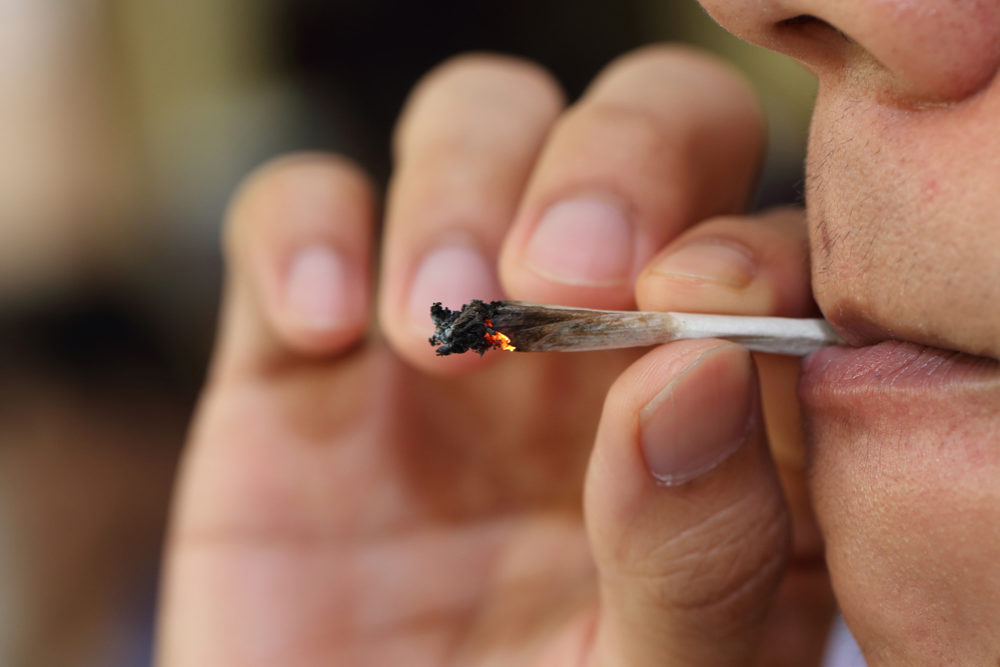Even Small Amounts of Marijuana Could Have Side Effects On Teen Brains: Study

Teens who smoke marijuana even one or two times may experience changes to their brains that impact thinking and memory, according to the findings of a new study.
Researchers from the University of Vermont indicate that it takes only a small amount of cannabis exposure to alter teen brains, which could negatively affect memory and increase anxiety. Their findings were published this week in the Journal of Neuroscience.
As more states across the U.S. move to legalize marijuana, teen use has increased. This increase may set up a generation of youth who suffer side effects of marijuana exposure down the line, researchers warn.

Did You Know?
Millions of Philips CPAP Machines Recalled
Philips DreamStation, CPAP and BiPAP machines sold in recent years may pose a risk of cancer, lung damage and other injuries.
Learn MoreRates of marijuana use among teens are high, and continue to increase as legalization and social attitudes toward using cannabis become more lax. In fact, 35% of American 10th graders have reported using marijuana and use rates may be much higher.
During the new study, researchers analyzed the grey matter volume in 46 fourteen year-old adolescents who had smoked marijuana only a few times. They compared the grey matter volume to teens who had not used marijuana at all.
They found that several areas in the brain showed increased grey matter volume among teens who used marijuana compared to those who didn’t.
Researchers identified greater grey matter volume in regions of the brain in the bilateral medial temporal lobes and the bilateral posterior cingulate, lingual gyro and cerebellum. The grey matter was greater in those areas among teens who smoked marijuana only a few times.
The parts of the brain affected by marijuana included the amygdala, which is involved in processing emotions, and the hippocampus, which is the area of the brain involved with memory and reasoning. These are parts of the brain that are full of cannabinoid receptors.
Greater grey matter volume in those regions increases a teen’s risk of suffering from anxiety in the future. It can also decrease performance on cognitive and memory functioning tests.
Researchers say the findings of the study are significant in that it shows smoking marijuana only one or two times can have structural brain effects and cognitive effects on the brain. It is unclear if the changes are long term or will return after a period of time.
However, study authors did note it is unlikely the grey matter volume increase happened before the teens used marijuana and is more likely to be an affect of smoking marijuana.
Other research has shown using marijuana during adolescence is associated with long-term neurocognitive effects. Yet, most studies focusing on the effects of marijuana on the brain are conducted on adults and involve long-term use.
Get more articles like this sent directly to your inbox.
"*" indicates required fields
1 Comments




JamesJanuary 18, 2019 at 3:08 pm
Increase in Grey matter Senior author and University of Vermont (UVM) Professor of Psychiatry Hugh Garavan, Ph.D., and first author and former UVM postdoctoral fellow Catherine Orr, Ph.D., say this research is the first to find evidence that an increase in gray matter volume in certain parts of the adolescent brain is a likely consequence of low-level marijuana use. https://neurosciencenews.com/[Show More]Increase in Grey matter Senior author and University of Vermont (UVM) Professor of Psychiatry Hugh Garavan, Ph.D., and first author and former UVM postdoctoral fellow Catherine Orr, Ph.D., say this research is the first to find evidence that an increase in gray matter volume in certain parts of the adolescent brain is a likely consequence of low-level marijuana use. https://neurosciencenews.com/teen-brain-cannabis-10532/ Decrease in Grey matter; These results suggests that small GM volumes in the medial temporal lobe are a risk factor for heavy cannabis use or that the effect of cannabis on GM reductions is limited to adolescence with no further damage of continued use after early adulthood. https://www.ncbi.nlm.nih.gov/pmc/articles/PMC4880314/ The results showed that compared with controls, marijuana users had significantly less bilateral orbitofrontal gyri volume, higher functional connectivity in the orbitofrontal cortex (OFC) network, and higher structural connectivity in tracts that innervate the OFC (forceps minor) as measured by fractional anisotropy (FA). https://www.pnas.org/content/early/2014/11/05/1415297111 So which is it? Increase or decrease?